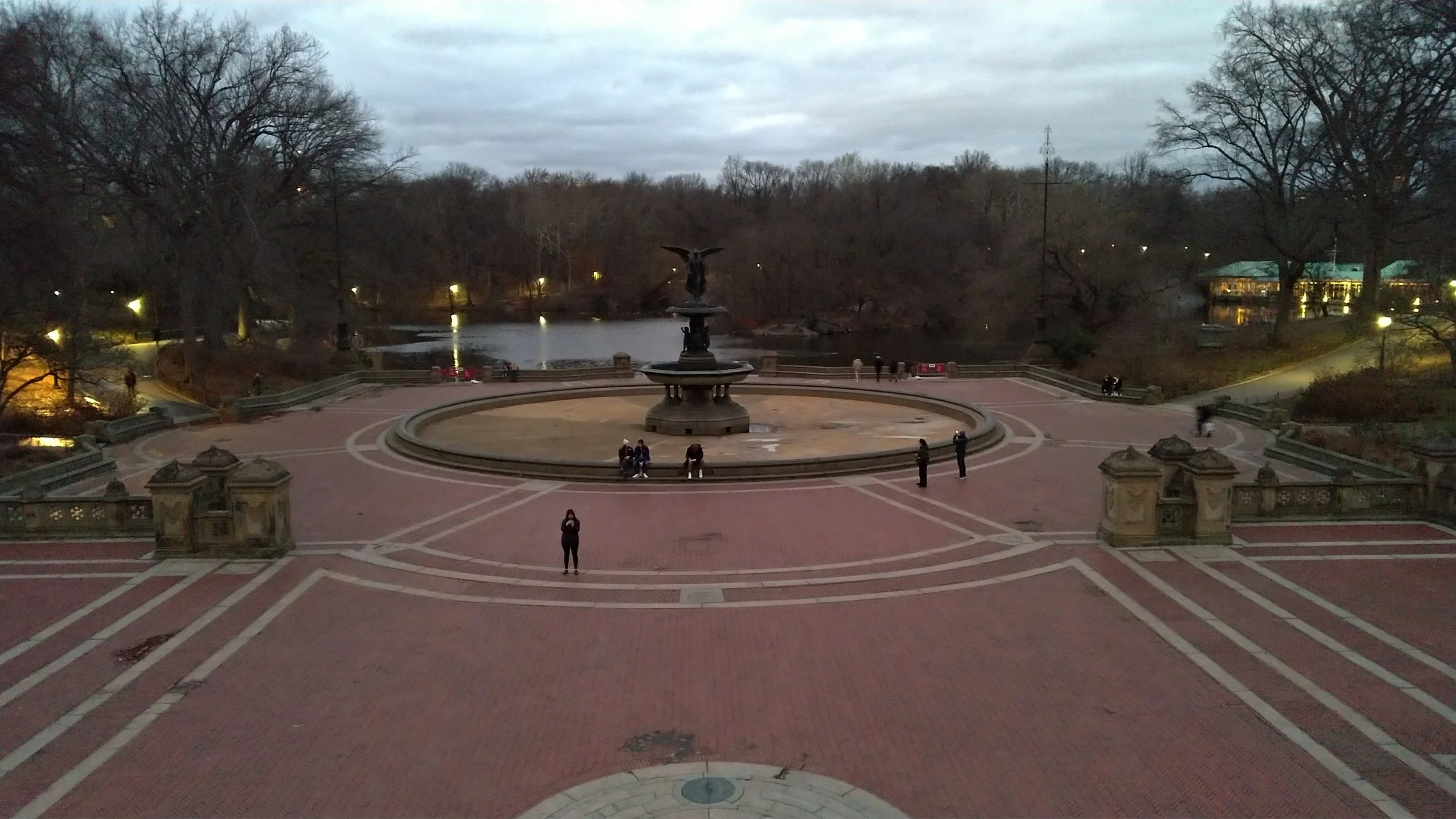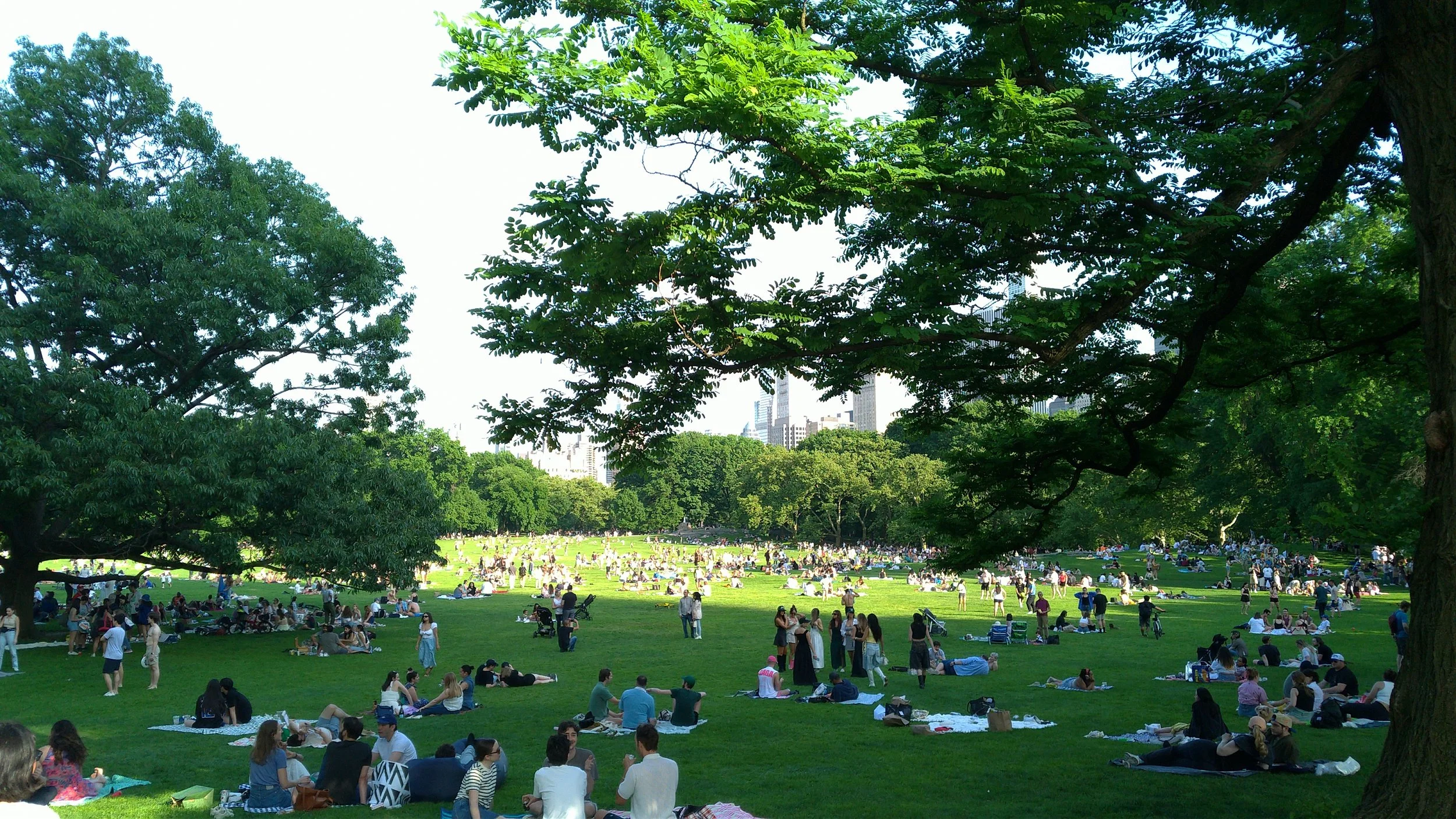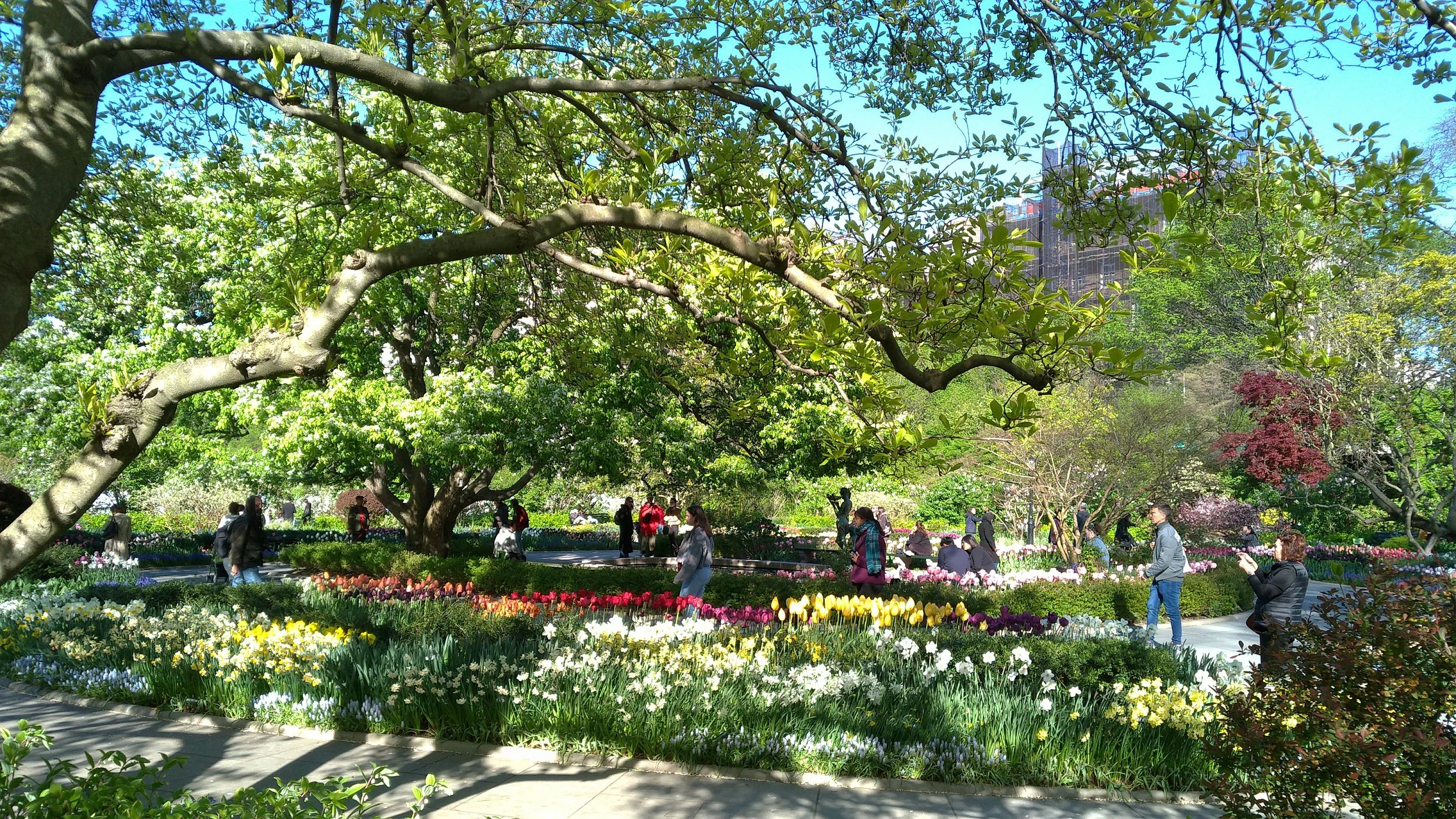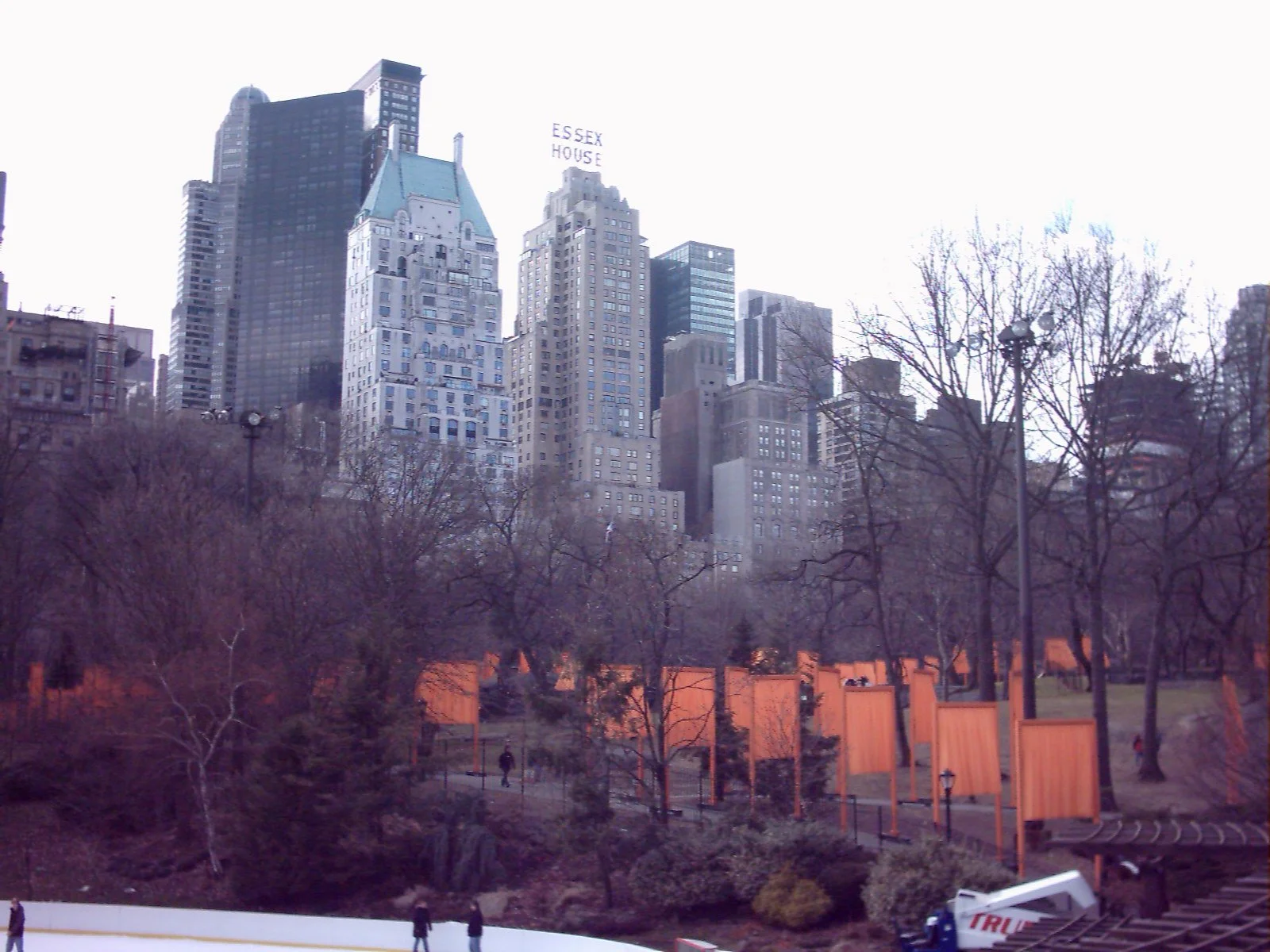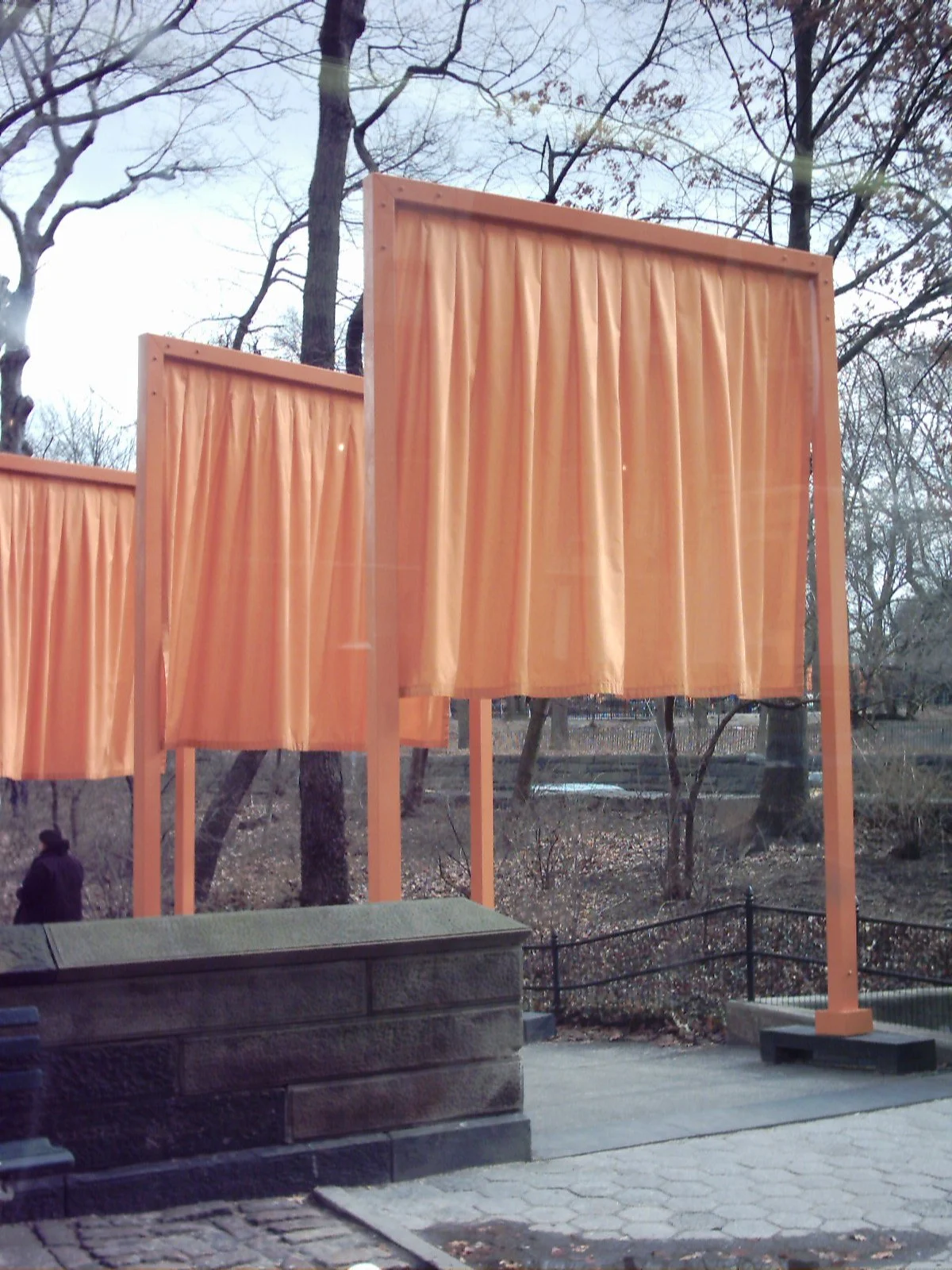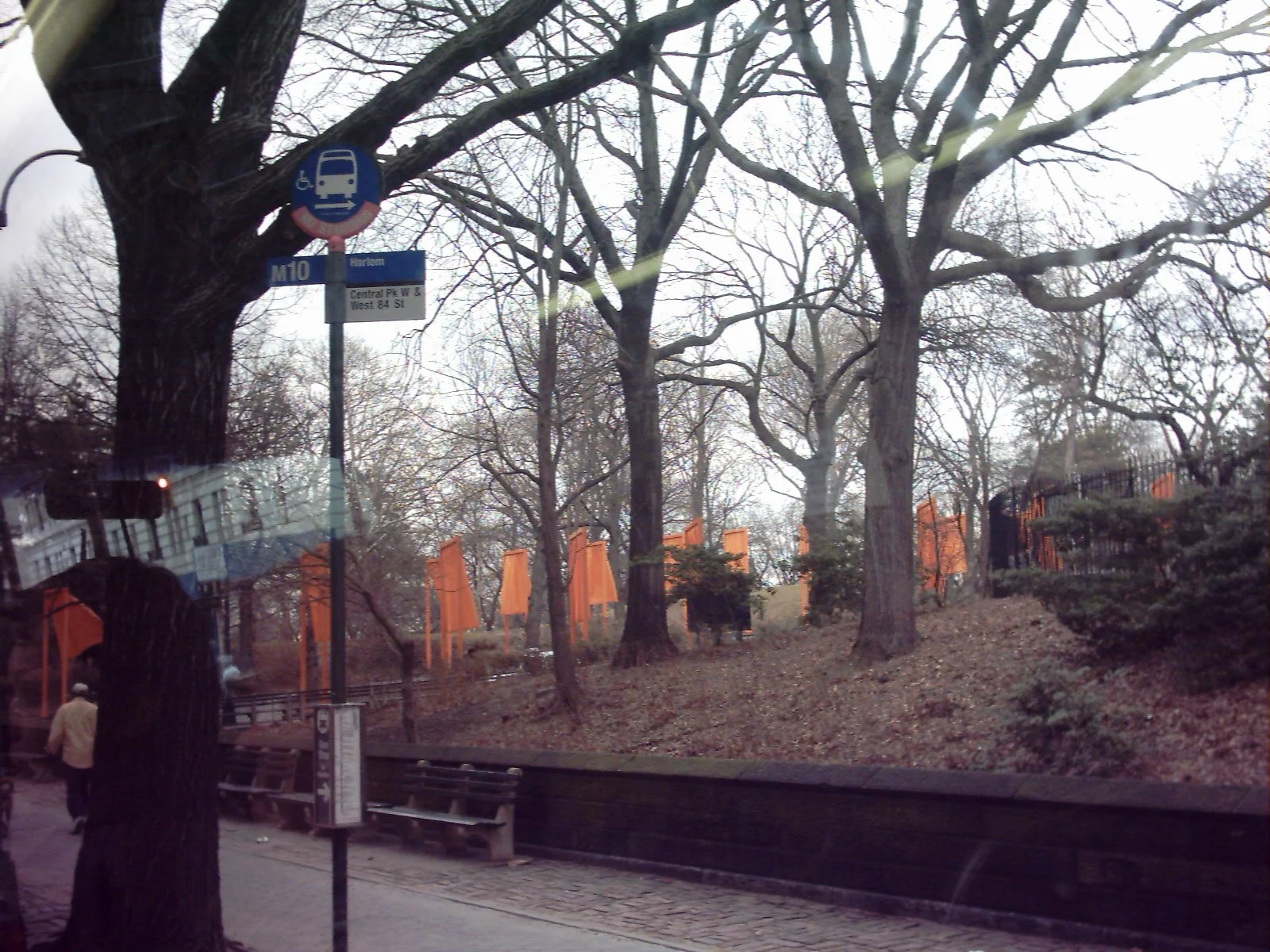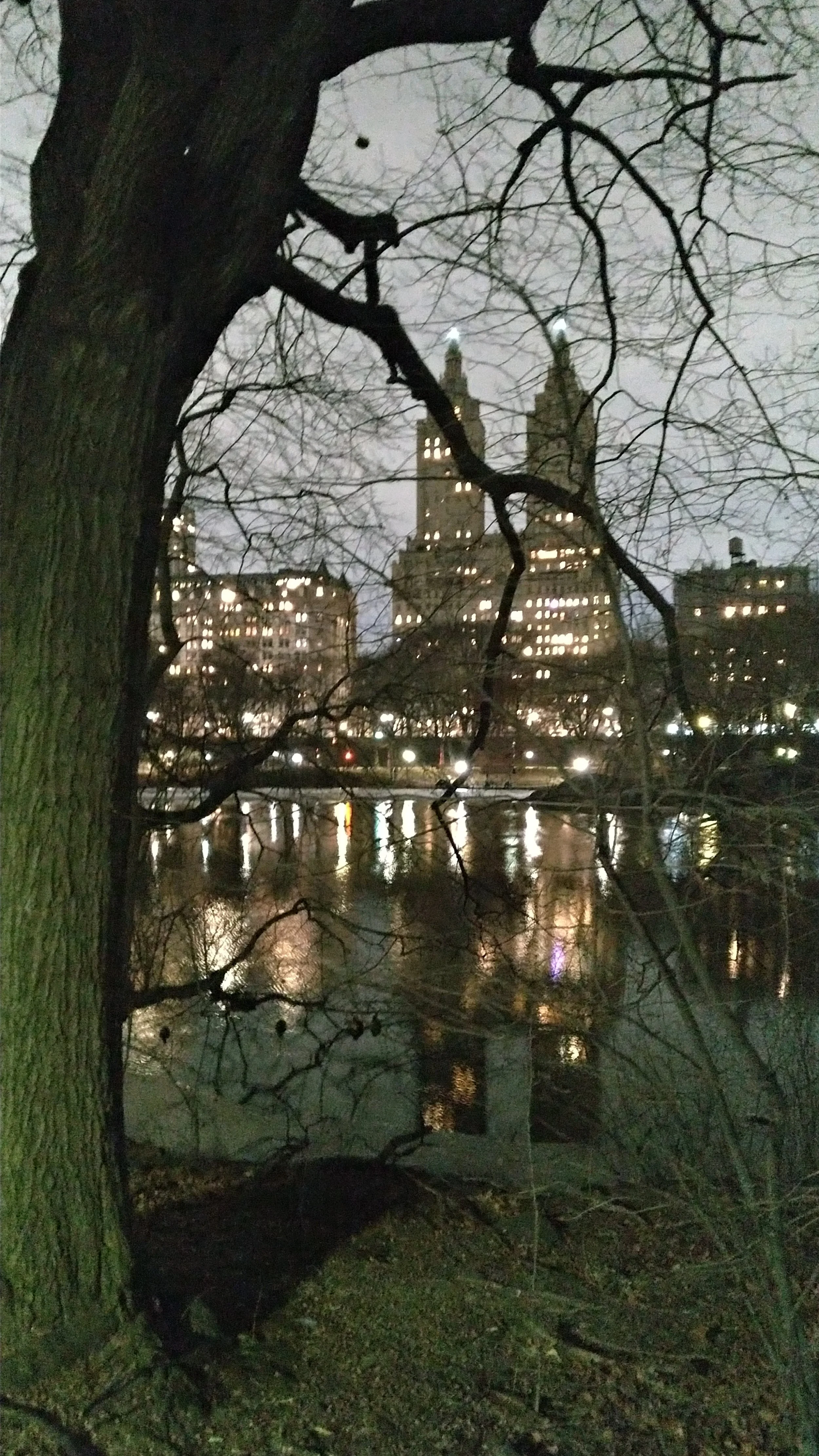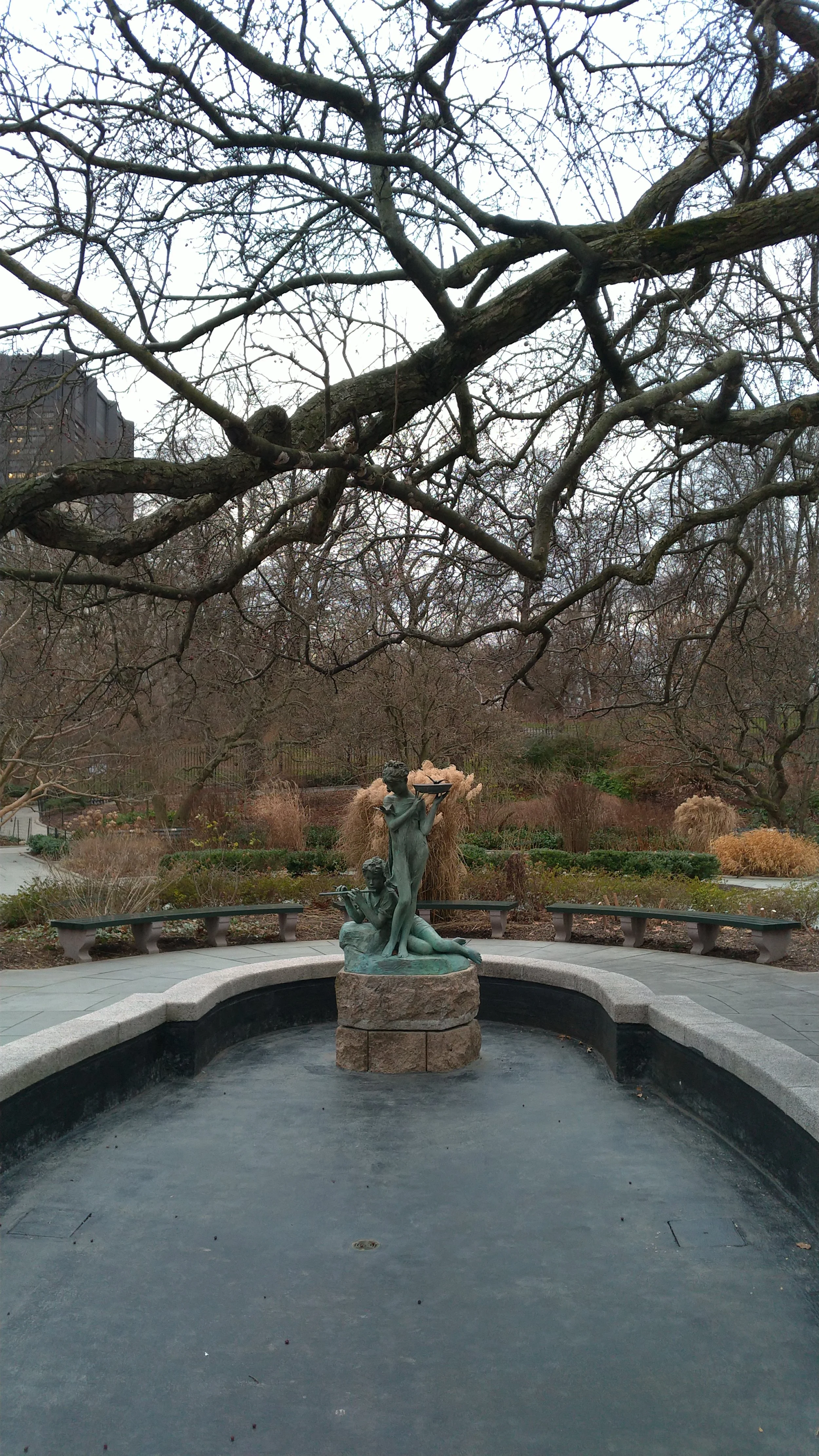The other day I crossed Central Park from north to south in the dead of winter, after sunset and with strong wind. All the way from 110th to 59th Street, I think I encountered only one pedicab. The driver was naming the skyscrapers in the south, underscored by upbeat pop music (“In New Yooork...”). Except for that cute touristy note, I felt as if I had the whole park to myself – the rest of us were “from the neighborhood,” “family”: runners, bikers, and dog-walkers. I was probably the only false note – the bizarre solitary walker, no dog, no nothing. (Yet I did come very close to entering the park alone and exiting with a “pet”: a young raccoon had gotten trapped under a drain grid close to the Lake, and I kept her company until I was assured by the staff on duty who answered my call that they would come free her. I almost froze to death, I couldn't stay any longer at 20 degrees Fahrenheit to watch the rescue.)
Of course, the park is more attractive when autumn's orange palette splashes over it, or when spring's little magic wand sprinkles it with tiny white and pink miracles, or when it turns into one big lush green oasis caressing your ears and cooling your skin. But the trees make their presence felt never as strongly as in the heart of winter. Naked, exposed, the dark silhouettes seem so unprotected that it's as if they demand that you turn to them and ask them: “Hey, trees, are you still alive?”
Although I've been living in New York City for almost two decades now, it's embarrassing but I'll admit it: I don't know Central Park that well (or as well as I should, given that I've walked it countless times). I always embark with a naturalist's thirst, determined to reach as deep as I can in the “Ramble's” shrubs (the closest to wilderness this park gets) and to, at last, get lost in the woods, away from the tourists who are having their photos taken in little boats and on picturesque bridges, and the locals who are picnicking on the lawns; yet I always wind up succumbing to the geometrical motifs of the twenty-nine-storied Art Deco “El Dorado” or admiring the former Carnegie Mansion (now Cooper Hewitt Museum), which, through its Beaux-Arts features, thrusts me back to my Paris grad school days. I never manage to stay in the park – I am drawn by the architectural “sirens”, the exquisite buildings that grace the avenues framing the rectangular Manhattan “lung.”
I find comfort in the thought that the brains behind the superb green “island within the island” have purposely designed it this way; that I fall in the trap masterfully conceived by Frederick Law Olmsted and Calvert Vaux in 1858, and that the ingenious architects are watching me from “the beyond” as I relish the sight of turtles and Canada geese sunbathing on the little rocks of the numerous bodies of water in the park, while at the same time encouraging me to go out to 72nd Street to study the torches lighting the bewitching “Dakota” entrance, and let my imagination gallop in the... fields of the 1884 Upper West Side, when the legendary building was erected, approximately a century before John and Yoko moved into one of its hyper-luxury apartments.
Woody, the arches and the eternal deferral
On top of the guilt that I betray nature for architecture's sake, I am also “persecuted” by Dobel, the Woody Allen character in his own film, “Anything Else.” Most of the scenes with said character take place in Central Park – like, of course, so many other scenes by the filmmaker who has perhaps captured and adored the Big Apple more than any other, to the extent that you wonder: did the Apple make Woody or vice-versa?
So, at the climax of the plot, I think that Dobel asks Jerry (the Jason Biggs character) to meet him in one of the park's arches. To this day, I have not identified the arch; I let it hover as a mystery, so that, every single time I wander and pass through some arch, I wonder whether it was the one from the pivotal scene of “Anything Else.” I resist the temptation to google Central Park's arches; I'm waiting for them to come my way by themselves.
And the movie – with which I fell in love way before I wound up in NYC – it's been years since I last rewatched it; I push to the extremes the effort to stay with the aftertaste of its NYC quintessence as I remember it from the old days, with my innocent eyes of the “then”, and as only Woody knows the trick to depict: his archetypical characters – Amanda (Cristina Ricci), the ambitious yet stormy-weather-minded young actress; her middle-aged mom (Stockard Channing), trying to rekindle her music career; and, of course, the duo, comedy writer buddies (a very young Biggs and the much older, mentoring Woody) – all of them surrender to their passions, losing each other and reuniting with each other, losing and reuniting with love and happiness, always in the bittersweet consolation of the legendary City.
Sempé the fantastical
But it's not only Woody haunting me: as I gaze at my park comrades ride their bikes and run, images drawn by a non-native, yet absolute New Yorker, to whom we owe some of the most authentic depictions of life in the metropolis, emerge. Onto my fellow “Park-ers” of today I project the Bjorn Borg-styled terry cloth headbands worn while jogging in the '80s, or I think that present-day runners are holding their Walkmans – marvelous details drawn by Sempé's hand.
(Who would have known how quickly his little “men,” all of them reading the Times in any possible spot and position – on benches, while walking, while roller-skating – would look “museum-like”? Nowadays, maybe one out of a hundred people is holding an actual newspaper in the park; everybody's playing with their phones.)
The vivid, super-entertaining drawings that had made such an impression on my early adolescent brain when I was browsing them in the '80s and '90s Greek magazines are surfacing once again, particularly during the past two years, after they were revived by the 2023 retrospective exhibition dedicated to the unparalleled French cartoonist at the French Institute of New York.
The 2005 “Gates”
I left for the end the return to where it all started: I probably love Central Park the way it is this time of the year, snowy and deserted, because that's how I first met it, exactly 20 years ago. In February 2005, on our very first day in New York (and in the “new world”), my sister and I walked excitedly up Madison Avenue and ran to step on the dear little snow on the paths and slopes of the park, following the... “Gates” of some (once again) Europeans: scattered throughout, Cristo and Jeanne-Claude's metallic door-shaped frames, with the orange-colored hung fabrics flying like curtains, were “spattering” the white landscape with warm bright color. Although the visual artist duo's installation (“The Gates”) lasted only a few days, the city's enchanting gate had opened widely forever. Because, as several famous people repeat again and again in variations, it takes only once to get “baptized” in New York: you start belonging to it the second you set foot, and the filter lasts forever.
This essay first appeared in Greek in the TA NEA newspaper (online) on April 3, 2025.
It was reproduced by HellasJournal.com.
Το κείμενο αυτό πρωτοδημοσιεύτηκε στην εφημερίδα ΤΑ ΝΕΑ (ηλεκτρονική έκδοση) στις 3 Απριλίου 2025.
Αναδημοσιεύτηκε από το HellasJournal.com.
Για να διαβάσετε το ελληνικό κείμενο, κάντε κλικ εδώ.


